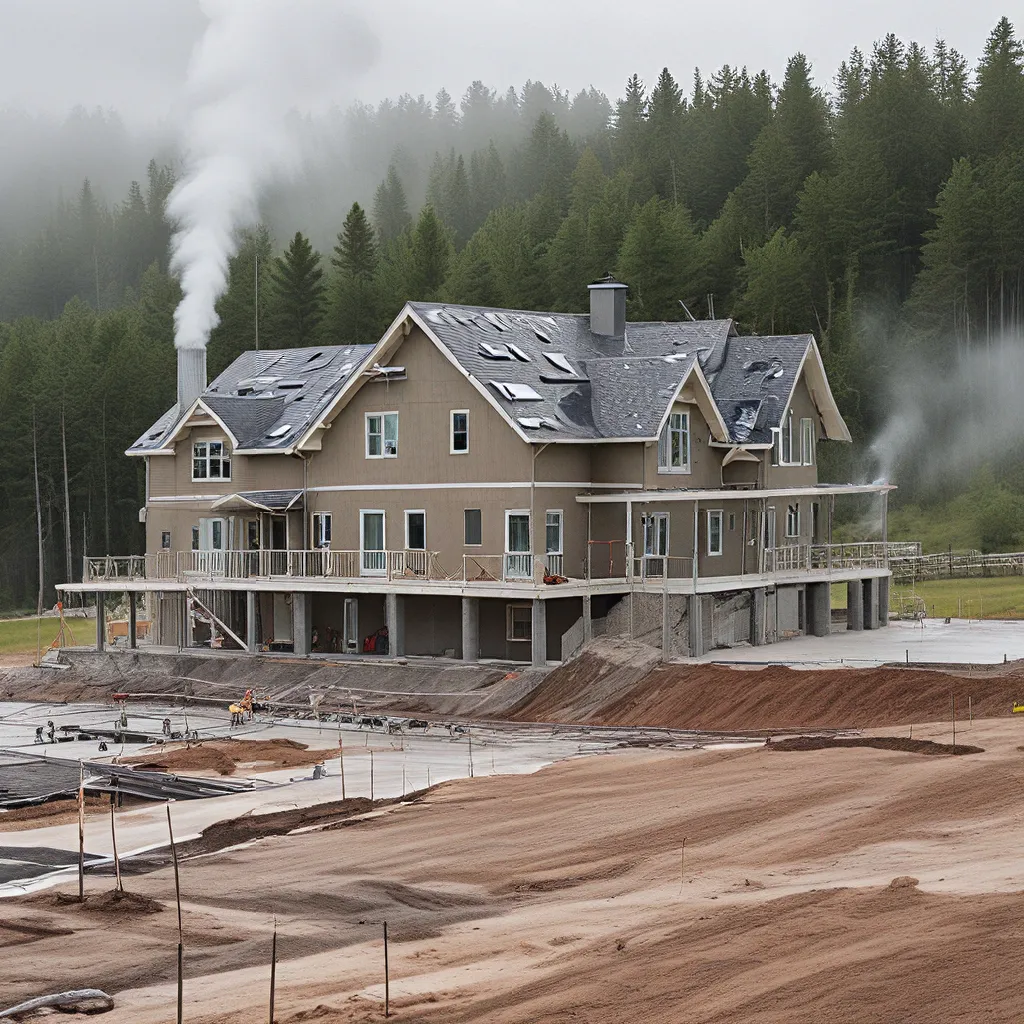
Unlocking the Secret to Year-Round Comfort (and Serious Savings)
It was a blistering summer day, the kind that makes you long for the crisp, cool air of an air-conditioned oasis. But as I stood in my backyard, sweat beading on my brow, I couldn’t help but wonder – is there a better way to beat the heat (and the utility bills) than traditional AC? That’s when I stumbled upon the answer, buried just beneath my feet.
Harnessing the Earth’s Thermal Magic
You see, the ground a few feet below the surface maintains a relatively constant temperature throughout the year – around 55°F, to be exact. And that, my friends, is the secret to geothermal heating and cooling. These systems, also known as ground-source heat pumps, use the earth’s natural thermal energy to efficiently regulate the temperature of your home.
According to the Department of Energy, geothermal heat pumps “take advantage of the constant temperature of the shallow earth” to heat and cool your home. In the winter, they extract heat from the ground and pump it into your living spaces. And in the summer, they do the reverse, drawing the excess heat from your home and depositing it back into the earth.
It’s like a magical, never-ending loop of thermal energy, all powered by the trusty old ground beneath your feet. And the best part? Geothermal systems are incredibly energy-efficient, often boasting efficiency ratings of 300% or more. That means for every unit of electricity you use, you get three units of heating or cooling in return. Talk about a bang for your buck!
Breaking Free from the Tyranny of Outdoor Temperatures
One of the biggest advantages of geothermal systems is that they’re not at the mercy of the ever-changing outdoor temperatures. Unlike traditional air-source heat pumps, which struggle to operate effectively when it’s freezing cold or scorching hot outside, geothermal systems maintain their efficiency regardless of the weather.
The Department of Energy explains, “Even though the installation price of a geothermal system can be several times that of an air-source system of the same heating and cooling capacity, the additional costs may be returned in energy savings in 5 to 10 years depending on the cost of energy and available incentives in your area.”
In other words, the initial investment might be a bit higher, but the long-term savings on your utility bills will more than make up for it. And with a system life estimated at up to 24 years for the indoor components and 50 years for the underground loops, you’re looking at decades of reliable, eco-friendly temperature control.
Mastering the Art of Thermal Comfort
Now, I know what you’re thinking – “Geothermal sounds great, but how exactly does it work?” Well, let me break it down for you:
Closed-Loop Systems: These are the most common type of geothermal systems. They circulate a water-based solution through a closed loop of high-density plastic tubing buried underground or submerged in a body of water. A heat exchanger transfers the heat between the refrigerant in the heat pump and the antifreeze solution in the closed loop.
Direct Exchange Systems: This type of system skips the heat exchanger and instead pumps the refrigerant directly through copper tubing buried in the ground. It’s generally the most cost-effective option, especially for residential installations with available land.
Vertical Systems: When space is limited, geothermal systems can go vertical. Holes are drilled up to 400 feet deep, and the pipes are inserted and grouted in place. This approach is common for large commercial buildings and schools.
Pond/Lake Systems: If you’re fortunate enough to have a suitable body of water on your property, a geothermal system can use it as a heat source or sink. Pipes are run from the building to the water and coiled underwater, taking advantage of the thermal stability of the aquatic environment.
No matter which configuration you choose, the end result is the same – consistent, comfortable temperatures in your home or business, all while slashing your energy bills and reducing your carbon footprint. It’s a win-win-win situation if I ever saw one.
Overcoming the Installation Hurdle
I know what you might be thinking next – “Okay, this all sounds great, but how hard is it to actually install a geothermal system?” Well, fear not, my energy-conscious friend, because the process is surprisingly straightforward.
According to the experts at Pioneer Electric Cooperative, the key is to work with a qualified installer or contractor who can evaluate your specific site and determine the best type of system for your needs. They’ll assess factors like climate, soil conditions, and available land to ensure maximum efficiency and performance.
And here’s the best part – many states and local governments offer incentives and rebates to encourage the adoption of energy-efficient technologies like geothermal. So, not only will you be saving money on your utility bills, but you might even get a little something back from the powers that be.
So, if you’re like me and you’re tired of sweating through the summer or shivering through the winter, it might be time to consider tapping into the thermal magic of the earth. With geothermal heating and cooling, you can unlock a whole new level of comfort and savings, all while doing your part to protect the planet.
Now, if you’ll excuse me, I’m going to go enjoy the blissful embrace of my geothermal-powered abode. Ahh, the sweet smell of energy efficiency and year-round comfort. Doesn’t get much better than that, does it?